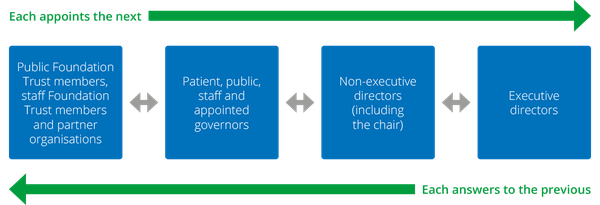Introduction
(Photo: Governors Simon Dyer, Laura Wareing and Thewodros Leka at the 2018 Staff Awards ceremony)
Introduction to Chelsea and Westminster Hospital NHS Foundation Trust
Chelsea and Westminster Hospital NHS Foundation Trust is one of the top-ranked and top-performing trusts in the UK, operating over two main hospital sites—Chelsea and Westminster Hospital and West Middlesex University Hospital—and across 12 community-based clinics in North West London. It prides itself on delivering outstanding care to a community of more than 1.5 million people.
The Trust runs the second-largest maternity service in England, delivering 10,500 babies annually. Specialist care includes our world-renowned burns service and award-winning sexual health services.
The last few years have been among the most challenging that the Trust has faced. The COVID-19 pandemic—a health crisis like no one has seen before—placed unprecedented challenges and incredible pressures on the Trust and other NHS services across the country.
Coronavirus required us to work in new ways. Many staff volunteered to be redeployed to other roles across the Trust and we rolled out new technology at speed to allow our staff to work from home, including holding virtual clinics with patients—one of several successful new ways of working that we will continue to use going forward.
Our Council of Governors’ purpose is to represent the people in their local communities and ensure their needs and views are taken into account. The Council of Governors is responsible for appointing Trust non-executive directors and the chair of the board, reviewing plans and keeping an eye our services.
Governance in a Foundation Trust

The Board of Directors is accountable for developing the strategic direction of the Trust. It is responsible for delivering the strategy and business plan and for ensuring that management systems and staff are in place to achieve the Trust’s aims. The Council of Governors holds the non-executive directors, individually and collectively, to account for the performance of the Board of Directors.
The Board of Directors comprises executive and non-executive directors. Non-executive directors are appointed by the Council of Governors to bring skills and experience from outside the Trust to the board. Their function is to scrutinise the work of executive directors through the Trust’s subcommittee structure, and to provide the Council of Governors with assurance that the Trust is making decisions based on the best information available and in the best interests of patients. This structure is designed to ensure clear accountability between executive directors of the Trust and the Trust’s key stakeholders.
The chair of the Board of Directors is also the chair of the Council of Governors and, in this respect, occupies a unique position. The dual role of the chair enables clear communication between the board and the Council of Governors.

